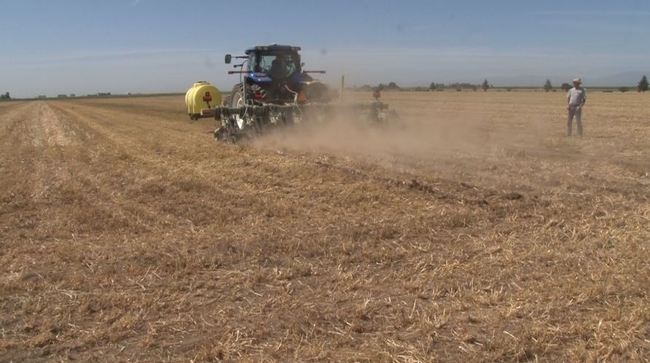- Author: Jeffrey P Mitchell
Folks,
Here are the answers for CT Crop Quiz #87. This round there were several folks who came quite close with their answers, but nobody got them all right.
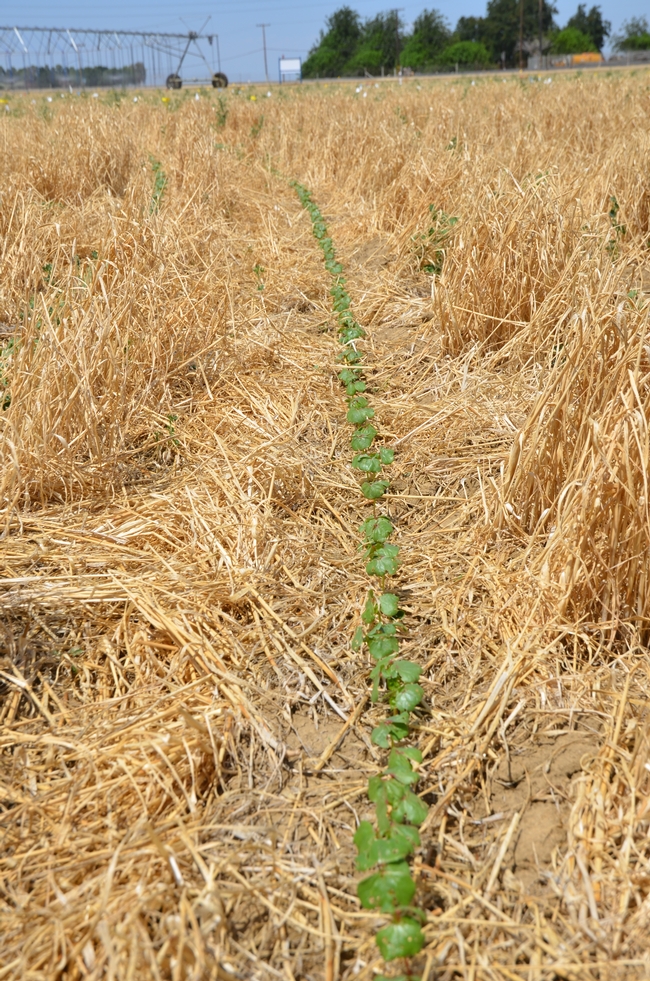
This was a no-tillage crop planting.
What is happening in the attached photo?
In the photo that was provided with the quiz, a 6-row JD 1730 no-till seeder was working its way around a center pivot field of an herbicide burned-down wheat cover crop using GPS that allowed circular planting of cotton. This is actually part of a research study that couples no-tillage with residue preservation and precision overhead irrigation. A recent photo of a section of this field following cotton emergence is provided. The pivot irrigation system is seen in the background of the photo.
Name the nearest US town to where this CT crop photo was taken.
The nearest town to this field is Five Points, CA. 93624. For those who may not know it, Five Points is the “Gateway to the West Side” of California's San Joaquin Valley.
Another rather surprising aspect of this particular CT Crop Quiz would be that according to our best information, this is somehow the only no-till field of cotton in all of California.
Stay tuned for additional CT Crop Quizzes that will be coming up soon. Remember that there have been two winners of prior quizzes. Awards will be given out at one of our upcoming CASI Workgroup recognition events later in the summer.
All the best,
Jeff
- Author: Jeffrey P Mitchell
While there were some good replies submitted for CT Crop Quiz #86, we had no winners. One person almost had all the answers correct. Here are the answers for this quiz.
1) What is the form or type of CT that is shown by this photo?
This is a field that is being seeded to soybeans using an 8-row no-till planter.
2) What is actually going on in this photo?
The soybeans are being seeded when the rye cover crop is still green and standing.
3) Where was the photo taken? (What is the nearest US town?)
The field where this photo was taken is near the town of Cambridge, IL. Monte Bottens and his Dad, Bob, are the farmers.
4) What was the farmer's primary motivation for using this form of CT in this field this year?
This was the first year that Monte and Bob tried no-till seeding their soybeans directly into a standing cover crop. Their goals in doing this were to first of all add residue from the cover crop as a partial means for controlling weeds and to also try to reduce their overall reliance and use of glyphosate herbicide at their farm. They were also trying to avoid problems that can be encountered when trying to plant into a “half dead” cover crop that has been sprayed with herbicide, but that isn't yet dried down and easy to plant into. The 8-row planter that is shown in this photo is Monte's research and demonstration planter. You can see the 24-row planter that they typically use at their farm in the short You Tube video that is linked below.
You can also see more about “no-tilling green” in the attached article that was in a recent issue of the No-till Farmer Magazine's Conservation Tillage Guide for February 2016.
A new CT Crop Quiz will be issued soon. Here is a hint for that quiz.
What will be shown is similar, yet different from what has been shown in CT Crop Quiz 86.
Good luck with CT Crop Quiz # 87. Remember that any CASI member associated with what is shown in the quiz photo or any family member of someone involved with what is shown in the quiz photo is ineligible and not able to win the $100 cash award for correctly answering the quiz.
Special thanks to Monte Bottens for sharing the photo used for CT Crop Quiz #86!
- Author: Jeffrey P Mitchell
Folks,
Apologies to one and all this week for my lapsing in getting this note back out to you all. We had some pretty intense field work out in Five Points this week that took considerable time and effort and I am only now catching up a bit with things that should have been done much earlier. Be that as it may though, ……
I am very pleased to let everyone know that we have not one, but two winners for CT Crop Quiz #53! That's right. Two CASI folks correctly provided answers to the quiz questions and thus these folks will each be receiving their $100 cash awards at our next workgroup event sometime this summer.
Congratulations go out to Barbara Kutzner, a first-time CT Crop Quiz award recipient, and also to Monte Bottens, a multiple quiz winner! Very nice work both of you with your correct answers to Quiz #53.
Here are the correct replies to the questions of this quiz.
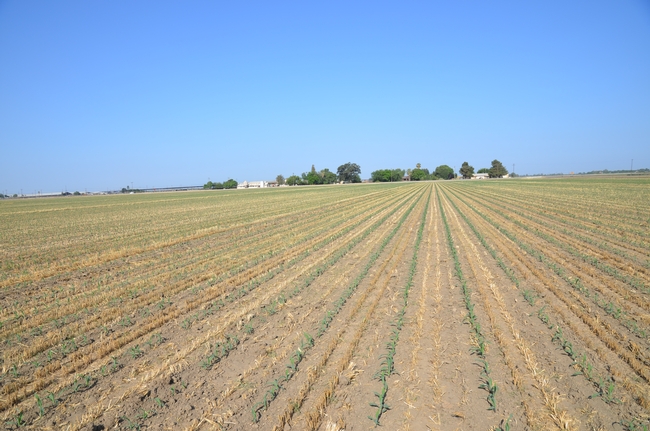
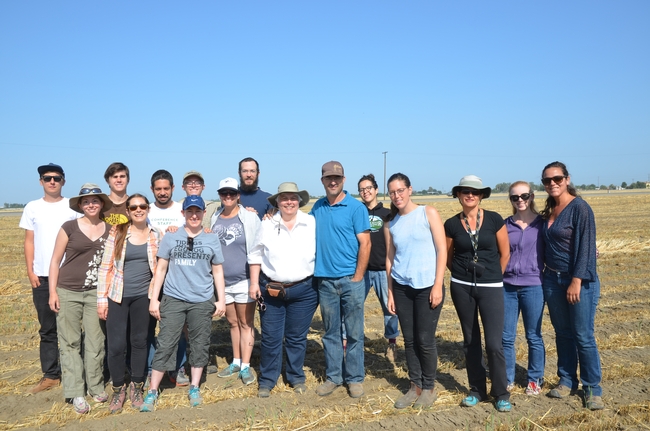
BMR corn for silage
2) Name the nearest town to this farm field.
Hanford, CA
3) What was the CT crop that preceded this CT crop?
Wheat
4) How is this CT crop irrigated?
Border check surface irrigation
5) About what percent of tillage passes have been reduced over time by this farmer to develop the CT seeding system seen here relative to the farmer's previous tillage system?
About 85%
This field is at Giacomazzi Dairy. Dino Giacomazzi has determined this reduction in tillage passes. The attached photo was taken last Saturday in the field where Dino hosted a student group of my former major professor, Carol Shennan, and her agroecology class from the University of California, Santa Cruz. Dino hosts a good number of tour groups and visitors to his farm and has done an awful lot to help our workgroup over the years.
Congratulations to Barbara and Monte! Your prizes will be available at our next meeting.
All the best,
Jeff
- Author: Jeffrey P Mitchell
January 12, 2014
CT Crop Quiz #51
With a brand new year, we're off to a new CT Crop Quiz. Number 51 in our longstanding series.
This one risks being rather difficult, I'm afraid, so the cash prize that is available for a complete set of correct answers will now be $200.
Folks,
Despite my learning pretty much ‘from the source' late yesterday that they had been getting inquiries from at least a couple of our overhead irrigation CT Crop Quiz participants and that these guys might actually be on the hunt and poised to provide a full set of correct answers to Quiz #51, I report here that we have no winners for this round. Sorry. The Quizmaster has not become bankrupt yet.
In order to now provide everyone with the correct answers to this quiz, I need to relate a bit of a story to you all.
Last Saturday, I was afforded the very wonderful opportunity to meet and tour the farm of Bruce and Brad Scott of Scott Brothers Dairy Farm along with their Dad down in San Jacinto, CA. Needless to say, their hospitality was simply unforgettable as was the sheer innovation that they're achieving at their farm. They are doing some pretty impressive things all around and I heartily encourage you all to get to know them and what they're doing when they're up in Tulare next month at the World Ag Expo. They are presenting a ‘virtual farm tour' discussion as part of a session put on by Progressive Dairy Magazine. They will all be there for this and if you have a chance, I really encourage you to go and see what they're doing. The cropping part of it is truly but one aspect to their overall systems innovation, - that definitely includes some pretty intriguing manure waste management and gasification / energy production dimensions.
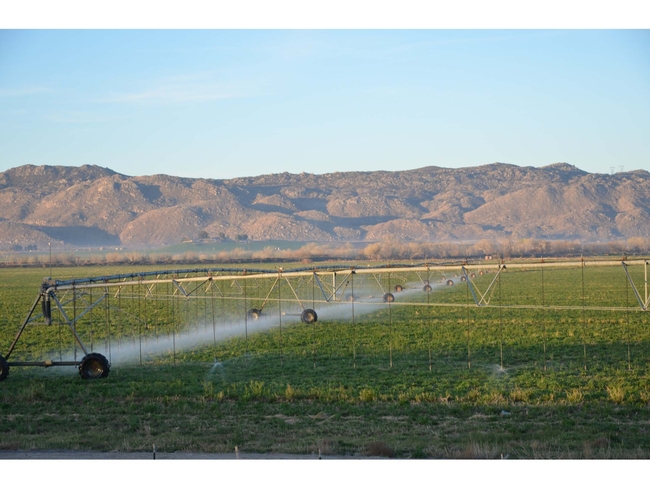
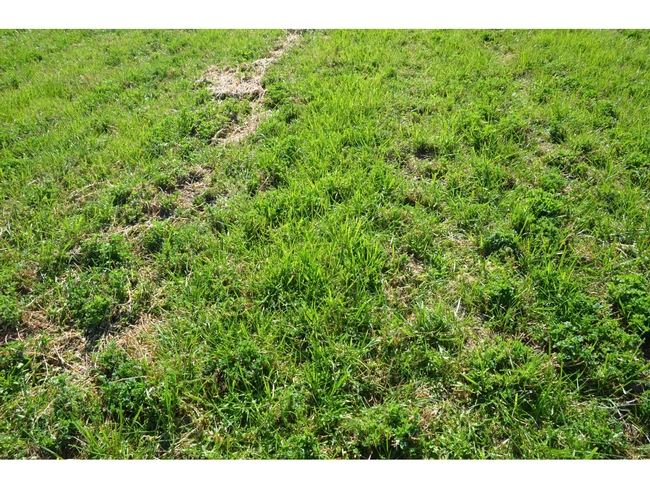
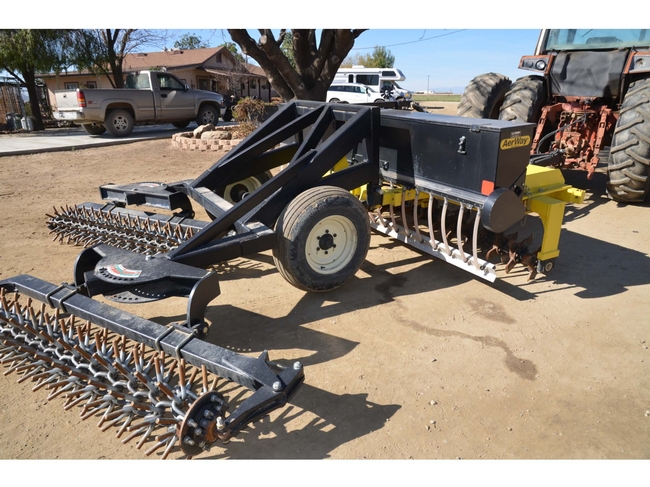
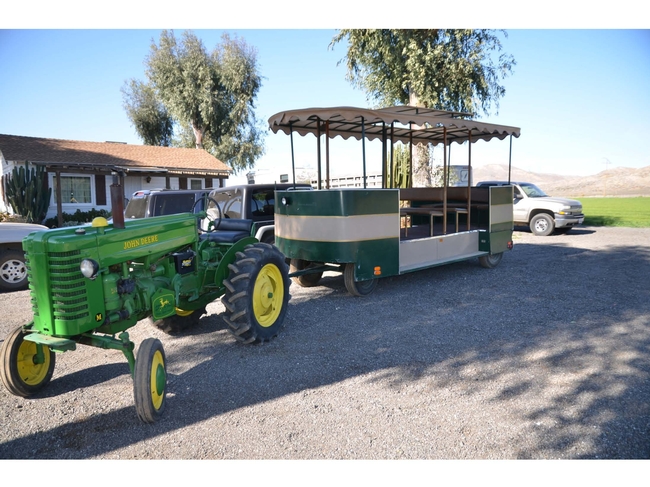
1. What is this CT crop or rather, what are these CT crops?
The CT crops that were shown in this photo were alfalfa no-till overseeded with rye grass. See photo 2 of the attached pdf file.
2) Where is the photo taken? (What is the nearest US town?)
San Jacinto, CA which is south of Riverside and the Moreno Valley
3) What form of CT was used to establish this crop in this field?
No-till seeding using the Aer Way seeder (Photo #3) was used to establish the rye grass in the alfalfa. This particular seeding method may be of interest to a number of you who're receiving this email.
4) What are some other important innovations that are being pursued at this farm?
Manure waste gasification, energy generation, precision overhead irrigation,
I was honored to be hosted by these folks and if you ever get a chance to meet them, I encourage you to do so. If you go down there to San Jacinto, they may even take you around in their new tour wagon (Photo 4). Needless to say, they're receiving considerable interest from lots of places for what they're doing.
All the best,
Jeff
- Author: jpmitchell@ucanr.edu
Unfortunately, there were no correct submissions for last week's CT Crop Quiz # 54. This means that the $100 cash prize now doubles with the next Quiz. Stay tuned for that Quiz in the coming few days. Do not be discouraged if you did not win this cash prize. You will have more opportunities in the future. Remember that so far, we've had two actual winners who've collected their $100 awards. You too could be a winner!
Here are the correct answers for CT Crop Quiz #54.
1) What is the form or type of CT that is shown by this photo?
This was rather an easy one to figure out.
This was an example of strip-tillage. And specifically, strip-tillage into a winter small grain silage crop ahead of corn seeding at a dairy.
2) Where was the photo taken? (What is the nearest US town?)
The nearest town was Orland, CA.
3) What was the farmer's primary motivation for using this form of CT in this field this year?
The primary motivation of this farmer for using strip-tillage was to save time and to save money on tillage passes ahead of his corn crop.
You can see a video of a public field day that was held at this farmer's field on the day that these photos were taken by looking at the You Tube link here.
https://www.youtube.com/watch?v=Jbeehf0zfOQ
You can see what Marty Poldervarrt, the farmer who did this strip-till field, says about the practice in the video.
Over 60 folks have already viewed this video.
To round out the complete story related to this CT Crop Quiz, this quiz provided a rather nice example of some real CT progress and success in a region of California where not much CT had been previously used, at least not to the extent that it is now being used. This progress stems in large part from a joint effort of a number of folks up in the Orland area including Steve Gruenwald, Marty Poldervarrt, Betsy Karle, Kandi Manhart, Greg Baker, and other farmers in this region who've been working on learning more about strip-tillage since about 2010 when Steve first got things going up there with an initial effort that involved 1,000 acres that first year. A very successful and information public field day was recently held at the farm of Marty Poldervarrt just outside of Orland that attracted over 30 folks.

